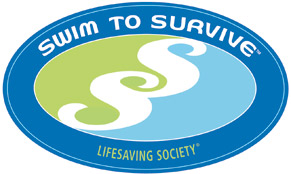The Society defines the minimum skills needed to survive an
unexpected fall into deep water. These are expressed in a skill
sequence in the Canadian Swim to Survive Standard:
- ROLL into deep water
- TREAD water for one minute
- SWIM 50 metres
Swim to Survive is aimed primarily at children, but people of
all ages should be able to perform the Society's Swim to Survive
Standard.
:::

Why Swim to Survive?
Basic swimming ability is a fundamental requirement in any
meaningful attempt to eliminate drowning in Canada.
The Society believes swimming is a life skill that all children
need to learn, just like fire safety or street-proofing.
- The Society estimates half of Canadian children never take
traditional swimming lessons - even though "swimming" is the second
most popular activity (after bicycling) in Canada among school-age
children between 5 and 12 years of age. The Lifesaving Society
wants to ensure every child has the basic skills to survive.
- :::
- Swim skills are not innate - they need to be taught - and all
children deserve the chance to learn.
- Our research shows that most drownings occur close to safety.
If every child in Canada could pass our Swim to Survive standard,
it could reduce the number of drownings by half.
Isn't it just swimming lessons?
No. Swim to Survive is different than swimming lessons - and not
a replacement for them. Swim to Survive teaches just the essentials
needed to survive an unexpected fall into deep water - an important
first step to being safe around water.
The Lifesaving Society strongly encourages parents to enrol
their children in swimming lessons.
:::
